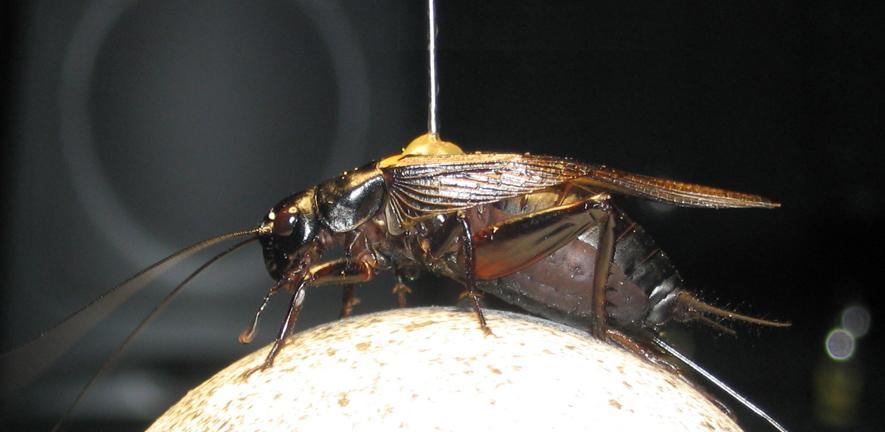
Submitted by Rachel Aucott on Wed, 15/12/2021 - 11:21
In a new paper Berthold Hedwig and Adam Bent analysed a new aspect of auditory orientation in crickets. When the amplitude modulation of species-specific acoustic signals is distorted in the transmission channel, signals become difficult to recognise by the receiver. Tolerant auditory pattern recognition systems, which after having perceived the correct species-specific signal transiently broaden their acceptance of signals, would be advantageous for animals as an adaptation to the constraints of the environment.
Using a well-studied cricket species, Gryllus bimaculatus, they analysed tolerance in auditory steering responses to “Odd” chirps, mimicking a signal distorted by the transmission channel, and control “Silent” chirps by employing a fine-scale open-loop trackball system. Odd chirps on their own did not elicit a phonotactic response. However, when inserted into a calling song pattern with attractive Normal chirps, the females’ phonotactic response towards these patterns was significantly larger than to patterns with Silent chirps. Moreover, females actively steered towards Odd chirps when these were presented within a sequence of attractive chirps. Our results suggest that crickets employ a tolerant pattern recognition system that, once activated, transiently allows responses to distorted sound patterns, as long as sufficient natural chirps are present. As pattern recognition modulates how crickets process non-attractive acoustic signals, the finding is also relevant for the interpretation of two-choice behavioural experiments.
Adam M. Bent and Berthold Hedwig, Tolerant pattern recognition: evidence from phonotactic responses in the cricket Gryllus bimaculatus (de Geer). Proc. R. Soc. B 288: 20211889.doi.org/10.1098/rspb.2021.1889
